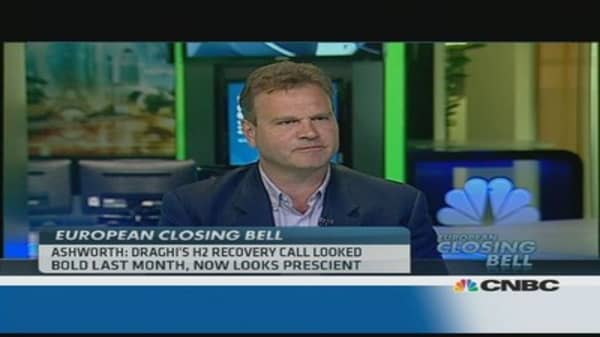"Taper terror" has investors once again running for cover, spurring a broad selloff this week in global equities and bonds, as well as the U.S. dollar and emerging market currencies. But, the euro – traditionally a risk-off victim – has been spared.
On Thursday, both the Dow and the S&P 500 finished 1.4 to 1.5 percent lower while Treasury yields spiked, as markets continued to gauge when the Federal Reserve might start to reduce its asset purchases. The selloff continued into Asia on Friday, with Japan's Nikkei falling 0.75 percent and futures are pointing to a lower open for European stocks.
(Read more: Why it's still 'too early' to dive into European stocks)
Amid the market gyrations, the euro emerged relatively unscathed, climbing around a full penny against the U.S. dollar to touch highs of around 1.3360 Thursday, before paring slightly to trade at around 1.333 on Friday.
"It's a relative economic play," says David Forrester, a forex strategist at Macquarie. He notes some of the economic data out of the U.S. Thursday disappointed, with the Empire State Manufacturing, Philadelphia Federal Reserve business activity and industrial production indexes all lower than expected.
"Cyclical data point to growth still happening in the U.S., but it's not stellar," Forrester says, noting that European data in comparison showed the continent climbed out of its long recession in the second quarter. "They're polar opposites."




